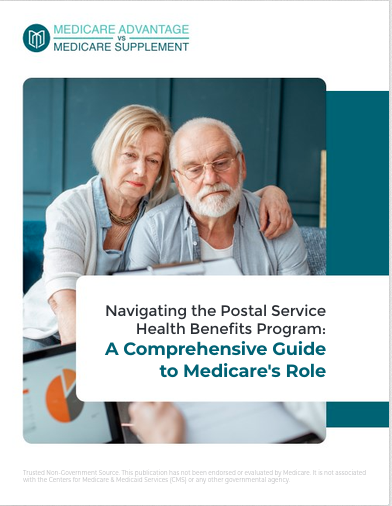Key Takeaways:
- In 2024, Medicare Advantage (MA) enrollment is at an all-time high, with over 55% of Medicare beneficiaries switching to these plans due to their all-in-one coverage and additional benefits like dental, vision, and hearing care.
- Lower out-of-pocket costs and extra perks, combined with the simplicity of managing health benefits under a single plan, are major reasons driving the surge in Medicare Advantage enrollment.
The Surge in Medicare Advantage Enrollment: What’s Driving It in 2024?
Medicare Advantage plans have become the go-to choice for millions of Medicare beneficiaries in 2024. With enrollment surpassing 33.8 million people, representing over 55% of the total Medicare population, it’s clear that more seniors and individuals with disabilities are choosing Medicare Advantage over traditional Medicare. But what’s driving this surge in enrollment? Let’s break down the factors contributing to the popularity of these plans and how they’re shaping healthcare for seniors in 2024.
Comprehensive Coverage and Extra Benefits
One of the biggest draws of Medicare Advantage plans is the comprehensive coverage they offer. Unlike traditional Medicare, which only covers hospital and outpatient care, MA plans often include Part D (prescription drug coverage), along with additional benefits like dental, vision, and hearing care—services that traditional Medicare does not cover.
For example, many Medicare Advantage plans include wellness perks such as gym memberships, transportation services to medical appointments, and even over-the-counter allowances for health supplies. These perks make MA plans more attractive to seniors looking to consolidate their healthcare needs into one plan. This is particularly appealing for individuals who need more than just the basics, like routine dental visits or vision checks, which are not included in traditional Medicare.
Lower Out-of-Pocket Costs
Medicare Advantage plans often come with lower out-of-pocket costs compared to traditional Medicare. While traditional Medicare requires separate premiums for Medicare Parts B (outpatient services) and D (prescription drugs), Medicare Advantage typically bundles these costs into one plan. Some MA plans offer lower premiums, though beneficiaries must still pay their Part B premium. However, the out-of-pocket maximums for Medicare Advantage plans—something not offered by traditional Medicare—limit the total amount beneficiaries can spend on healthcare each year, giving seniors better financial predictability.
Moreover, prescription drug costs in traditional Medicare (with a standalone Part D plan) have been rising, leading many beneficiaries to seek out Medicare Advantage plans that offer lower prescription costs. For seniors taking multiple medications, this switch can lead to substantial savings.
Simplified Healthcare Management
For many, the appeal of Medicare Advantage lies in its simplicity. With traditional Medicare, beneficiaries often need to juggle multiple plans: Original Medicare (Part A and B), a separate Part D plan for prescription drugs, and sometimes a Medigap policy to cover gaps in coverage. Medicare Advantage bundles all these services into one plan, making it easier to manage healthcare benefits and claims.
By having all their coverage managed by a single provider, Medicare Advantage beneficiaries can avoid the hassle of coordinating care between various plans and providers. This one-stop approach appeals to those who prefer a streamlined healthcare experience.
Aggressive Marketing and Awareness Campaigns
Medicare Advantage plans have benefited from aggressive marketing, especially during the annual open enrollment period. This heavy marketing presence has increased awareness about the additional benefits offered by MA plans, making them more visible to seniors weighing their healthcare options. Advertisements touting the extra perks and low premiums have become a common sight, drawing more interest and inquiries from beneficiaries looking for affordable yet comprehensive healthcare options.
Employer-Sponsored Medicare Advantage Plans
Another major factor in the growing popularity of Medicare Advantage is the shift in employer-sponsored retiree plans. Many large employers have moved their Medicare-eligible retirees from traditional Medicare with supplemental Medigap policies to Medicare Advantage plans. These group Medicare Advantage plans offer similar or better benefits while reducing administrative complexity and costs for both employers and retirees.
For example, in states like Michigan and New Jersey, group MA plans offered by employers have grown in popularity, covering a substantial share of retirees. This trend is expected to continue, further driving up Medicare Advantage enrollment.
Focus on Chronic Care Management
Medicare Advantage plans are especially popular among seniors with chronic health conditions. Special Needs Plans (SNPs) within Medicare Advantage cater to people with specific conditions like diabetes, heart disease, or chronic obstructive pulmonary disease (COPD). These plans offer personalized care management, including regular check-ins with healthcare providers, medication management, and coordinated care services.
SNP enrollment has seen significant growth, particularly in states with higher populations of seniors with chronic illnesses. These plans’ ability to offer targeted healthcare services has improved health outcomes for beneficiaries and further solidified Medicare Advantage as a preferred choice for those requiring ongoing care.
Medicare Advantage’s Role in Telehealth Expansion
The growth of telehealth services has also contributed to the rising popularity of Medicare Advantage in 2024. In the wake of the COVID-19 pandemic, telehealth became an essential tool for accessing healthcare, especially for seniors with mobility issues or those living in rural areas. Medicare Advantage plans have embraced telehealth by expanding coverage for virtual visits, making it easier for beneficiaries to access care from the comfort of their homes.
This is particularly important for managing chronic conditions or receiving routine care, where frequent in-person visits may not be necessary. Telehealth expansion under Medicare Advantage has not only increased access to care but also helped reduce healthcare costs for beneficiaries by minimizing the need for travel and in-person appointments.
Variations in Medicare Advantage Enrollment Across Regions
Medicare Advantage enrollment varies significantly across states and counties. In states like Florida, Connecticut, and Michigan, over 60% of Medicare beneficiaries are enrolled in Medicare Advantage plans, with certain counties exceeding 80% enrollment. Conversely, in rural areas, particularly in states like Alaska and Wyoming, Medicare Advantage penetration remains lower, with fewer plan options available.
This variation in enrollment is influenced by factors such as the number of available plans, urbanization, and regional healthcare use patterns. Counties with higher populations and more healthcare infrastructure tend to offer more Medicare Advantage plans, making them a more popular choice among beneficiaries in those areas.
Final Thoughts: Why the Surge in 2024?
The surge in Medicare Advantage enrollment in 2024 is no coincidence. With its expanded benefits, lower out-of-pocket costs, and simplified healthcare management, Medicare Advantage is increasingly becoming the preferred choice for seniors across the country. As more beneficiaries switch to these plans, the healthcare landscape continues to evolve, with Medicare Advantage expected to remain a key player in senior healthcare in the years to come.










